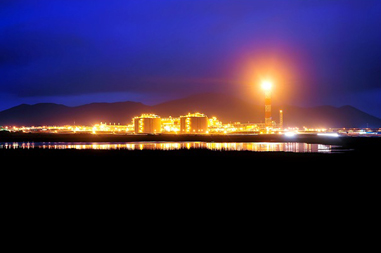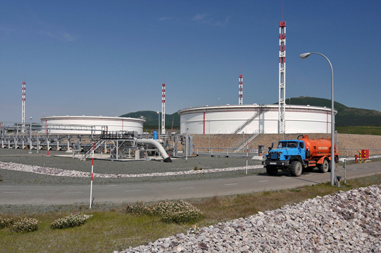- About the company
- Safety and Environment
- Social Performance
- Media
- Tenders
- Jobs and career
- Vacancies
- Students: Internship
- Graduate development programme
- Traineeship Programme
- Energy cup case championship
- Contact us
- Home page
- About The Company
- Company assets
- Prigorodnoye production complex
Prigorodnoye asset
The Prigorodnoye Asset includes a gas system, i.e., a liquefied natural gas (LNG) plant, LNG storage tanks, an LNG jetty, and an oil system, i.e., an oil export terminal, oil storage tanks, and a tanker loading unit, as well as Prigorodnoye port.
The Asset is located in the south of Sakhalin, on the coast of Aniva Bay, 15 km to the east of Korsakov. Aniva Bay does not freeze in winter and is ideal for oil and LNG shipments under the Sakhalin-2 project. Prigorodnoye port is the first Russian seaport built specifically for servicing LNG carriers and oil tankers.
The total area of the Prigorodnoye Asset is 236 hectares.
The LNG Plant comprises two trains and general service facilities. The trains prepare and liquefy natural gas. LNG is produced via gas liquefaction technology with the use of a double-mixed refrigerant, which involves two flows of circulating coolant.
The technology was specifically developed for the Sakhalin-2 LNG plant to ensure maximum performance through the harsh Sakhalin winters. The design capacity of the plant is 9.6 million tonnes of LNG per year.
After liquefaction, LNG is stored in two special thermosiphon tanks with a capacity of 100 thousand cubic metres each. LNG is stored in the tanks until the arrival of an LNG carrier.
LNG is offloaded through a special jetty that can receive LNG carriers with a capacity of 18,000 to 177,400 cubic metres. The jetty is 805 m long and equipped with four arms, including one for removing boil-off gas.
The Oil Export Terminal (OET), together with export pipelines and the Tanker Loading Unit (TLU), is located to the east of the LNG plant and shares with it both common control systems located at the operations centre and auxiliary systems located within the plant's territory.
Oil is supplied to the OET from the Piltun-Astokhskoye and Lunskoye fields via the Trans-Sakhalin pipeline system. At the OET, it is mixed with condensate from the gas fractionation plant. After blending, the oil is transported to two storage tanks: vertical cylindrical steel tanks with a floating roof, which are 18 metres in height, 93 metres in diameter, and have a capacity of approximately 100,000 m3 each.
The oil is transferred from the storage tanks to the tanker loading unit via a sub-sea pipeline. The TLU serves as a single-point mooring and is located 4.9 km offshore. The TLU is the terminal point of the pipeline system, which is intended for safe, year-round 24-hour loading of tankers with crude oil from the OET. The TLU can accept oil tankers with a capacity of 40,000 to 150,000 cubic metres.
- Safety and Environment







